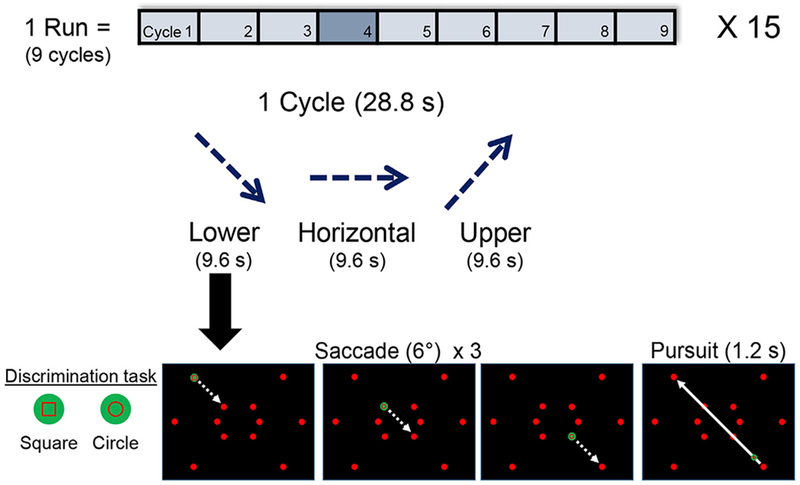Fig. 1.

Participants performed visually-guided saccades to measure the polar-angle representation of saccades in SC. In each session, activity from one SC was measured by having participants perform saccades toward a single hemifield (right shown here) along a particular polar angle. The stimulus screen showed a static grid of 12 red dots with one target dot turned green to indicate the saccade target. Participants made three 6° saccades along the current polar angle, after which a 1.2-s visually-guided smooth pursuit was made back to the origin along that axis. Upon fixation onto target dots and during the smooth pursuit, participants performed an object discrimination task (square or circle) to keep attention engaged and improve the reliability of eye movements. In each 28.8-s cycle, the vertical component of the saccades progressed through three polar angles: −45° (lower), 0° (horizontal), and +45° (upper). Each session consisted of 15–4.5-min runs, each of which included 9 cycles. (See Fig. S1 for evolution of task design).
